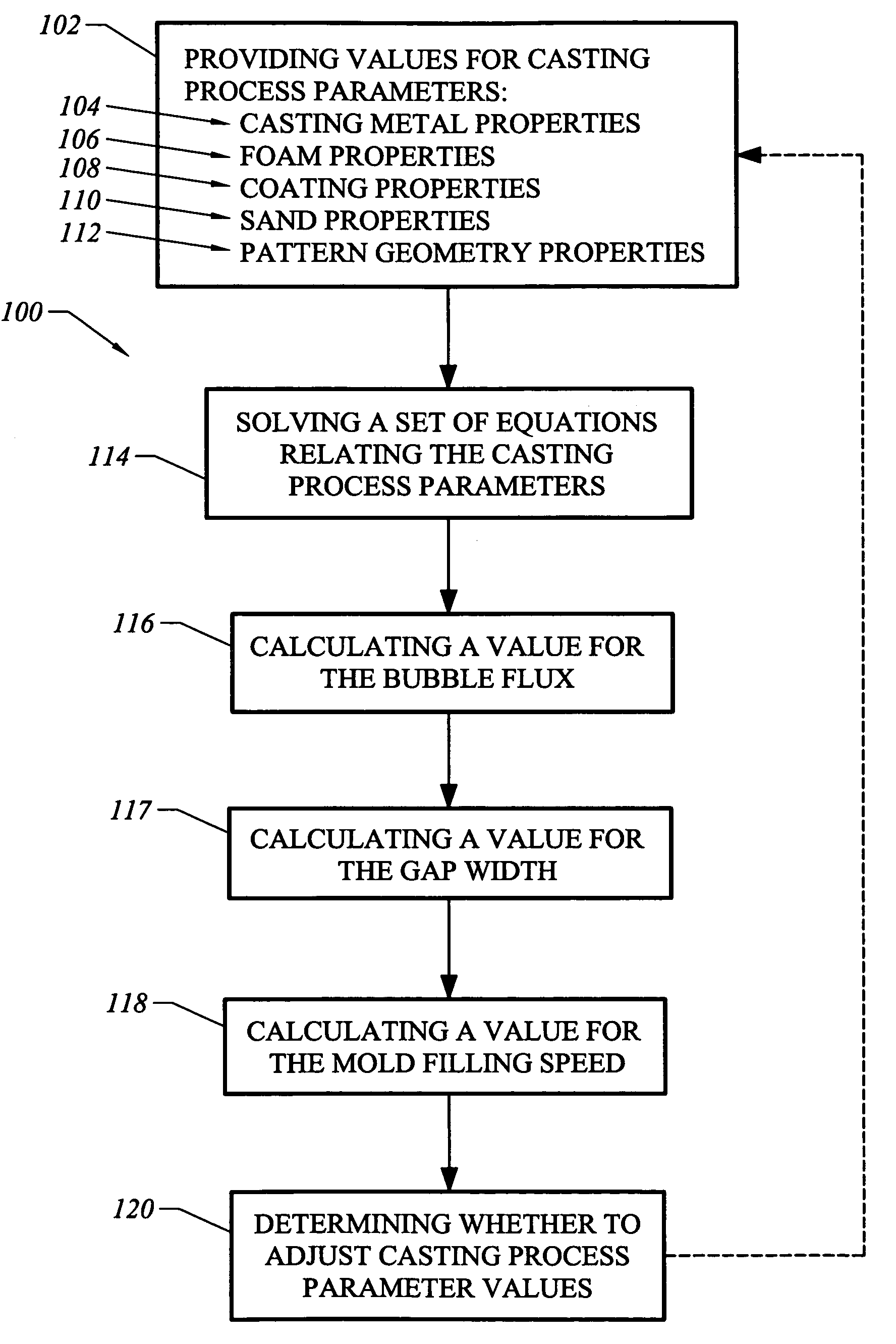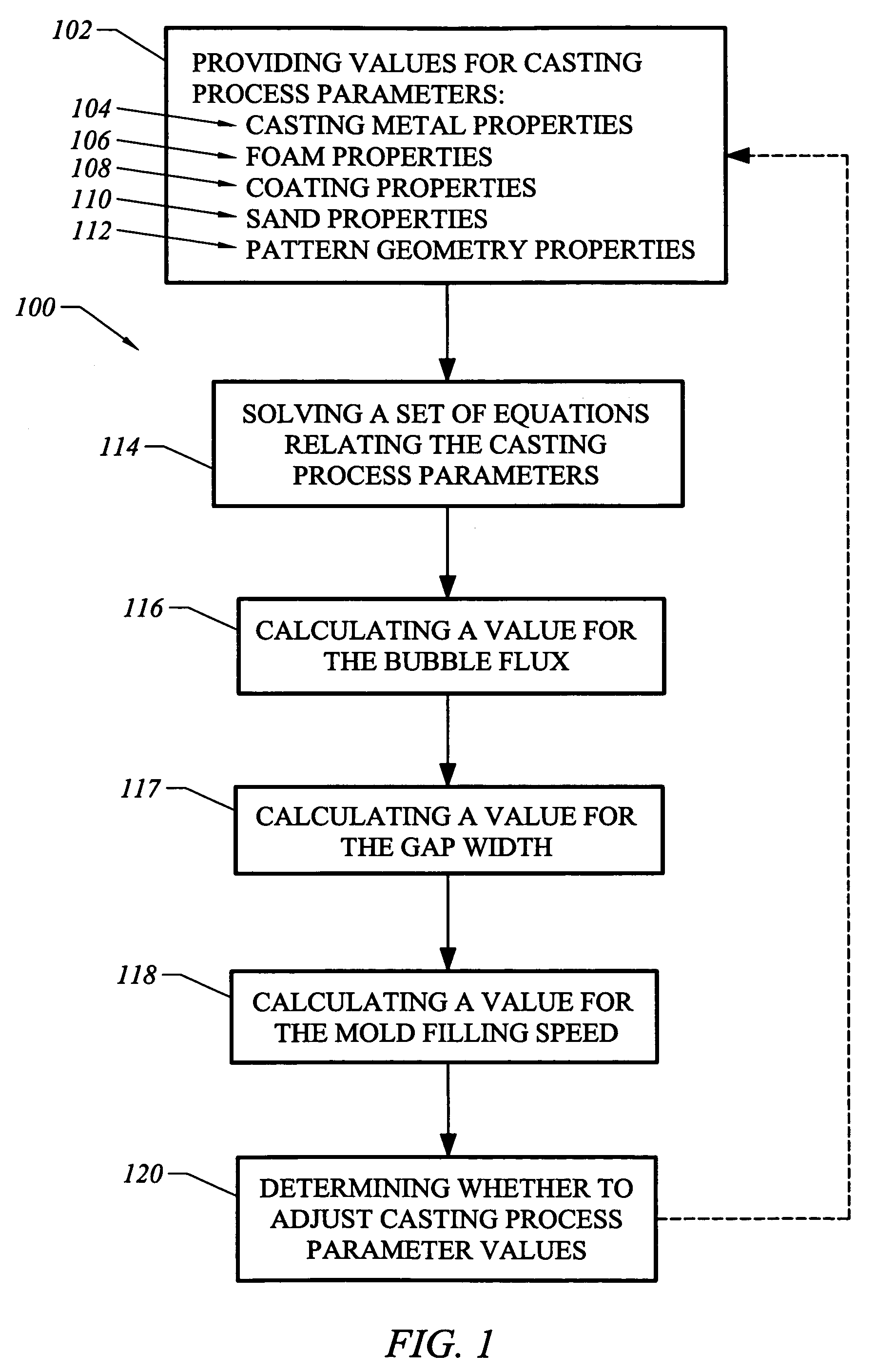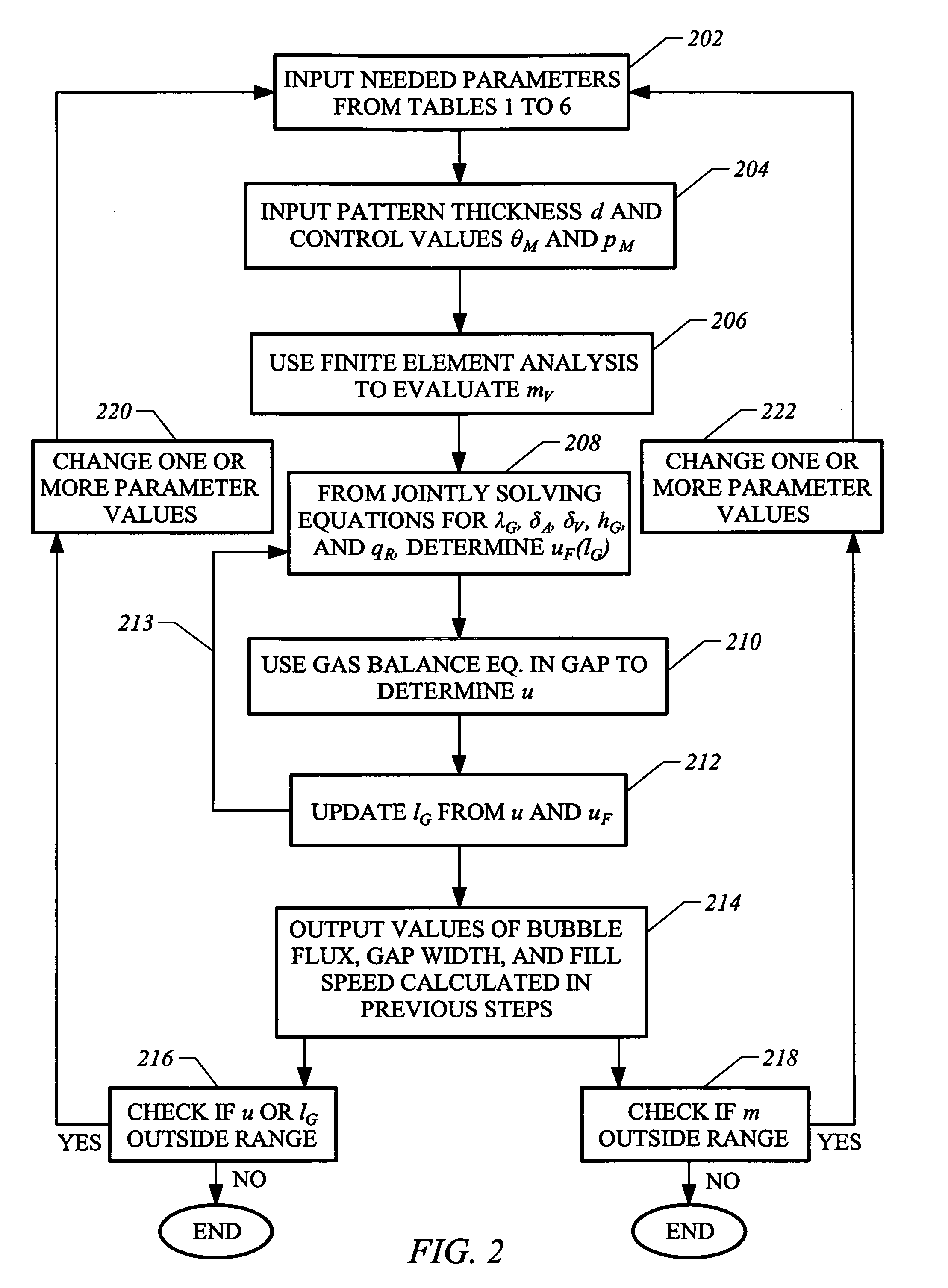System, method and apparatus for lost foam casting analysis
a technology of lost foam casting and analysis method, applied in the field of system, method and apparatus, can solve the problems of still leaving folds in the casting, prone to fill-related process anomalies, etc., and achieve the effect of reducing heat conduction from metal to foam
- Summary
- Abstract
- Description
- Claims
- Application Information
AI Technical Summary
Benefits of technology
Problems solved by technology
Method used
Image
Examples
Embodiment Construction
[0019]Disclosed herein are a system, method and apparatus for analyzing foam decomposition in gap mode during mold filling in lost foam casting. In general, when foam is heated by liquid metal during the casting process, it decomposes into liquid and gas byproducts. Different process conditions lead to different mechanisms of foam decomposition, called modes. Gap mode is described herein. Regardless of the decomposition mode, though, some part of the foam material always decomposes to liquid. Depending on the local process conditions, the coating may absorb some of this residual liquid, while the remainder, called the excess liquid, begins to vaporize as soon as it comes in contact with the advancing liquid metal.
[0020]In most cases, the excess polymer liquid vaporizes slowly, breaking free in small bubbles, which then rise due to their natural buoyancy in the much denser liquid metal. When the rising bubbles reach another flow front, gas begins to accumulate until a gap opens up be...
PUM
| Property | Measurement | Unit |
|---|---|---|
| temperature | aaaaa | aaaaa |
| temperature | aaaaa | aaaaa |
| speed | aaaaa | aaaaa |
Abstract
Description
Claims
Application Information
 Login to View More
Login to View More - R&D
- Intellectual Property
- Life Sciences
- Materials
- Tech Scout
- Unparalleled Data Quality
- Higher Quality Content
- 60% Fewer Hallucinations
Browse by: Latest US Patents, China's latest patents, Technical Efficacy Thesaurus, Application Domain, Technology Topic, Popular Technical Reports.
© 2025 PatSnap. All rights reserved.Legal|Privacy policy|Modern Slavery Act Transparency Statement|Sitemap|About US| Contact US: help@patsnap.com



